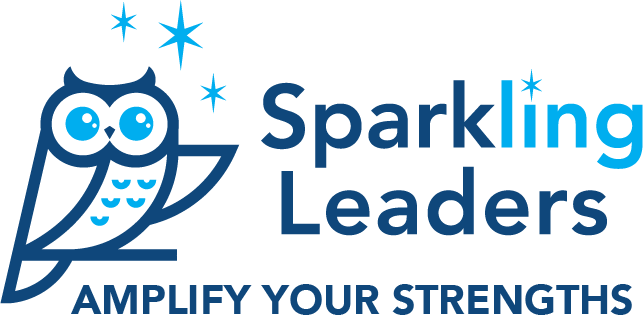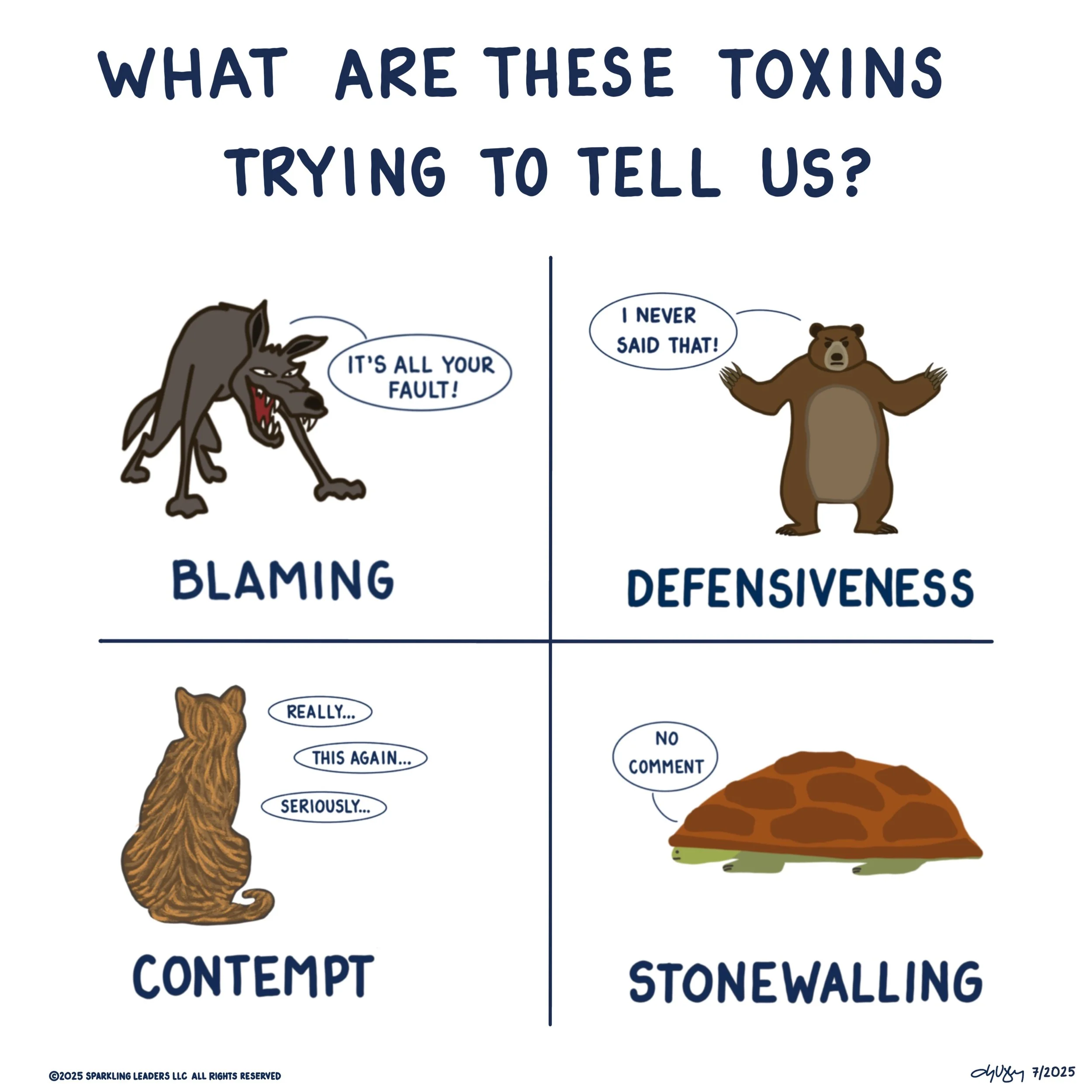Handling Toxic Communication
Tuesday's session on toxic communication revealed how pervasive disruptive patterns are in our daily interactions.
We started exploring methods for recognizing overwhelm, then examined Gottman's four communication toxins: blaming, defensiveness, contempt, and stonewalling*. The discussion covered recognition strategies across different contexts and research-backed intervention approaches. One of the key points we discussed was the emotions behind the behaviors.
First, we explored what happens when we reach our emotional limits.
The Realm: Our Overwhelm State
When we become emotionally flooded and can no longer take in new information, we enter what we call "the realm." Key indicators include:
Physical signs: Noise sensitivity, jaw/back clenching, fast heartbeat, hot face
Mental signs: Racing thoughts like ping pong balls, inability to focus, make decisions, and/or take in new information
Behavioral signs: Withdrawal, avoidance, making mistakes
Example: Calendar overload triggers overwhelm; solution: protect half-day blocks for self-care
Insight: Recognizing the need to schedule appointments with yourself, not just others
Once we understand our overwhelm signals, we can better recognize when toxic patterns emerge. Gottman's research identifies four primary communication toxins that damage relationships:
The Four Toxic Communication Patterns
1. Blaming - Attacking personality/character
Insight: Often happens when we don't have all the information, but assume we do
Insight: "Quiet blaming" (internal narrative) and shutting down rather than expressing it
Hidden emotions: Anger, resentment, frustration, unmet needs, fear
Antidote: Focus on the issue, not the person. Express a positive need using a soft start up such as, “I feel (or I need)____, when _____, could you please______.”
2. Defensiveness - Refusing to own behavior or accept feedback
Example: When our kids point out tone/intention mismatches in our communication
Insight: Often rooted in shame or past experiences (especially with ADHD/neurodivergence)
Hidden emotions: Shame, guilt, fear, insecurity, feeling misunderstood or unjustly accused
Antidote: Focus on learning from mistakes, be curious, figure out what 2% might be true, and own your behaviors.
3. Contempt - Acting as if something is inferior or worthless
Insight: Contempt frequently leads to or combines with other toxic patterns
Example: When I have to think hard about how to phrase something, I feel contempt
Hidden emotions: Disrespect, disgust, superiority, unresolved resentment
Antidote: Practicing looking for others’ strengths and perspectives. Try Situation, Behavior, Impact, Intent, Request (SBIIR).
4. Stonewalling - Withdrawing during important discussions
Can Occur Due To: Introvert/extrovert dynamics where processing styles clash
Solution: Give people space to process
Hidden emotions: Overwhelm, fear of conflict, anxiety, need for control, trauma
Antidote: Ask to Pause so you can Reset. Practice self-soothing strategies and then re-engage to participate.
While recognizing these patterns is crucial, the real work lies in developing practical responses.
Antidotes & Self-Soothing Strategies
Breathing & counting: Deep breaths and counting to 5-10 before responding
Writing it down: Getting racing thoughts out of head onto paper
Naming what's happening: "I'm sensing defensiveness here..."
Building trust proactively: Investing in relationships before problems arise
Looking for positives daily: Especially with people you feel contempt toward
Taking breaks: Self-soothing in your "realm" before returning
Our discussion revealed several key insights that apply across personal and professional contexts.
Takeaways
It's not always our responsibility to fix toxic communication in systems
All behaviors are signals: there's usually an unmet need underneath
Intent vs. Impact matters: What we mean vs. how it's received often differs
Systems tolerance: One person's toxic style can set the identity for entire teams
Building new muscles takes time: Practice and accountability are essential
To Do
Recognize early indicators of overwhelm
Be curious about what’s behind the behavior
Practice self-compassion
For Reflection
What causes you to feel overwhelmed? What are the early indicators? How do you react?
Which of the toxins do you see most in your professional and personal life?
What emotions are fueling the behaviors?
How can you help yourself when you encounter challenging behaviors?
How are the challenging behaviors important signals for the system?
*Resources
Gottman Blog on The Four Horsemen of the Apocalypse (Toxins)
Fight Right: How Successful Couples Turn Conflict Into Connection by Julie Schwartz Gottman, PhD, and John Gottman, PhD (Jan 2024)
The Seven Principles for Making Marriage Work: A Practical Guide from the Country's Foremost Relationship Expert by John Gottman, PhD, and Nan Silver (May 2015)
Difficult Conversations: How to Discuss What Matters Most, Douglas Stone, Bruce Patton, Sheila Heen (Nov 2010)
Crucial Conversations: Tools for Talking When Stakes are High, 3rd Edition, by Joseph Grenny, Kerry Patterson, Ron McMillan, Al Switzler, and Emily Gregory (Oct 2021)

